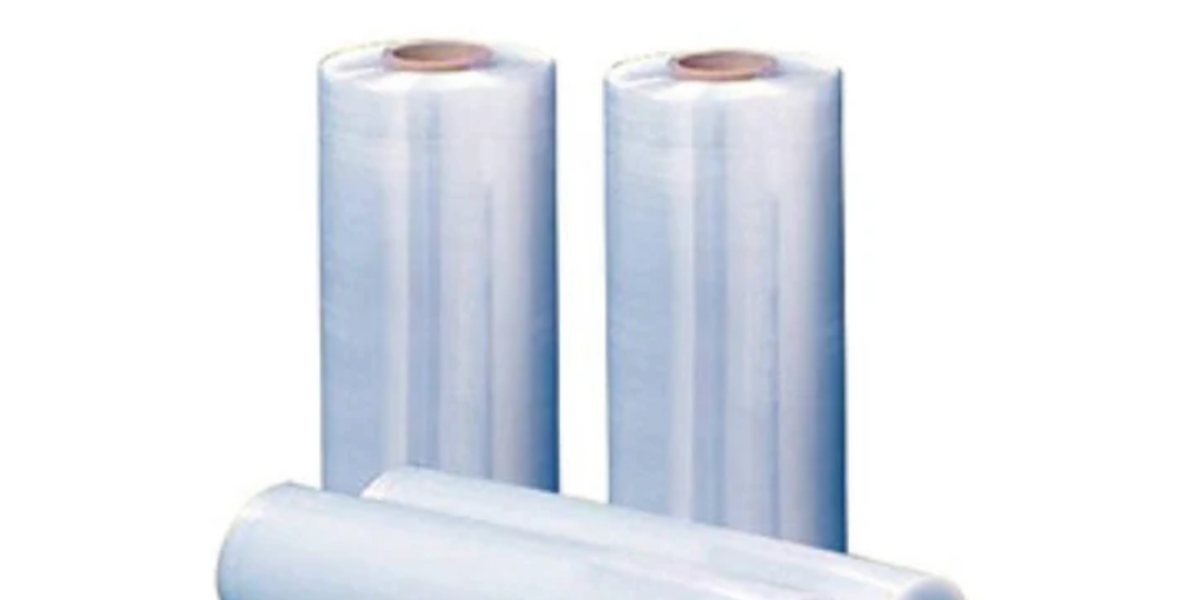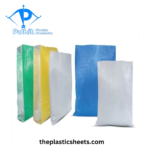Polyethylene (PE) film has become an integral part of various industries due to its exceptional characteristics, versatility, and cost-effectiveness. It is widely recognized for its ability to meet diverse packaging and protection requirements across numerous applications. This Pulkit Plastic Products delves into the various aspects of polyethylene film, including its types, manufacturing processes, applications—particularly in industrial settings—leading manufacturers, and the ongoing trends concerning sustainability.
Understanding PE Film: Types and Characteristics
PE film refers to plastic film produced from polyethylene, a widely used thermoplastic polymer. There are several types of PE film, each exhibiting specific properties suited for different applications. The two most common varieties are Low-Density Polyethylene (LDPE) and High-Density Polyethylene (HDPE).
LDPE is characterized by its flexibility, excellent tensile strength, and resistance to moisture. It is often utilized for applications requiring stretchability, such as bags and wraps. On the other hand, HDPE possesses a more rigid structure, making it ideal for applications that demand higher strength, such as industrial packaging and containers. The inherent properties of PE films, such as chemical resistance, UV stability, and anti-static features, make them exceptionally versatile and suitable for various environments.
The Manufacturing Process of PE Film
The production of PE film for industrial use involves several steps, beginning with the polymerization of ethylene monomers. The process typically includes extrusion, where polyethylene resin is melted and then forced through a die to form a thin film. HDPE film manufacturers often employ blown film extrusion technology, which allows for the production of thicker and more rigid films. In contrast, LDPE films are commonly produced using cast film extrusion, resulting in thinner films that can be wound onto rolls.
After the film is produced, it undergoes cooling and relaxing to enhance its properties. Various additives might be incorporated during the manufacturing process, such as slip agents, anti-blocking agents, and UV stabilizers, to enhance performance characteristics. The final product is then rolled up into convenient sizes for distribution and further processing by manufacturers and end-users.
One significant trend in the manufacturing process is the ongoing investment in high-tech machinery and eco-friendly practices. Many polyethylene film manufacturers are now exploring ways to minimize waste and energy consumption during the production process. This shift towards sustainability has led to innovations such as the development of biodegradable PE films and the utilization of recycled materials.
Applications of PE Film in Various Industries
PE film finds applications in diverse sectors, significantly due to its protective, lightweight, and flexible properties. In the packaging industry, PE film is prevalent for creating containers, bags, and wraps, ensuring products remain safe during transport and use. Its moisture barrier capabilities help keep food fresh and prevent contamination, thus contributing to increased shelf life and reduced food waste.
In the agricultural sector, PE film is used extensively for mulching and covering crops. Agricultural film helps retain soil moisture, warm the soil, and suppress weeds, ultimately leading to improved crop yields. It is also utilized in greenhouses, where it provides a controlled environment for plant growth while allowing for optimal sunlight penetration.
Furthermore, PE film is widely adopted in industrial applications. Companies often rely on PE film for packaging machinery, shielding products from dust and moisture during storage and shipping. Companies that produce heavy equipment utilize PE film for protective coverings that prevent scratches and damage on the production line or during transportation. The adaptability of PE film allows it to be tailored for specific industrial needs, including heavy-duty applications that require greater strength and durability.
Leading Manufacturers of PE Film
As demand for polyethylene film continues to rise, various manufacturers have emerged as leaders in the industry. These include specialized HDPE film manufacturers and general polyethylene film manufacturers who provide a wide range of options to meet varying customer needs.
Prominent manufacturers typically engage in research and development to enhance product offerings and develop new solutions. By investing in advanced production capabilities and technologies, they ensure that their PE films meet the highest quality standards while adhering to industry regulations. Many manufacturers also emphasize eco-friendly practices, including the use of recycled materials and sustainable production methods.
When choosing a polyethylene film manufacturer, businesses should consider factors such as the quality of the films, product variety, lead times, and the supplier’s reputation in the market. A reliable partnership with a manufacturer can streamline operations while meeting specific application requirements effectively.
Sustainability in PE Film Production
With increasing scrutiny on plastic waste, the focus on sustainability within the polyethylene film sector has gained momentum. Many polyethylene film manufacturers are actively seeking to reduce their environmental impact by adopting more sustainable practices and materials.
One significant innovation is the development of biodegradable PE films, which offer similar functions as conventional polyethylene while breaking down more readily in the environment. Additionally, the inclusion of recycled content in the production process contributes to a circular economy, reducing the reliance on virgin materials and minimizing waste.
Several organizations and manufacturers are also promoting recycling programs aimed at ensuring that PE film is properly disposed of and recycled after its useful life. By encouraging consumers and businesses to participate in these initiatives, the industry seeks to mitigate challenges related to plastic pollution and foster a more sustainable future.
Challenges Faced by the PE Film Industry
Despite the versatility and applications of HDPE film manufacturers, the industry faces several challenges. One ongoing concern is the environmental impact of plastic waste, which has prompted regulations and bans on single-use plastics in various regions. The PE film industry must strategically navigate these challenges by innovating and producing sustainable alternatives that meet regulatory requirements while serving consumers and businesses effectively.
Another challenge is competition within the industry, particularly as manufacturers strive to differentiate their products and offer better value to customers. Addressing varying demands from different sectors for specialized films necessitates continuous investment in research and development, which can be resource-intensive.
Additionally, fluctuations in raw material prices, especially petroleum-based materials used to produce polyethylene, can affect production costs and pricing strategies for manufacturers. Companies must remain adaptable to these market dynamics while seeking to maintain profitability and efficiency.
The Future of PE Film
Looking ahead, the future of polyethylene film is expected to be characterized by innovation, sustainability, and increasing demand. As industries continue to emphasize eco-friendly practices, the development of biodegradable and recyclable PE films will be pivotal. The ongoing research into new materials and technologies will likely yield improved properties, enhancing the film’s functionality and versatility.
Furthermore, the global trend towards e-commerce and online shopping is propelling the demand for effective packaging solutions that protect products during transit. PE film, with its lightweight and protective characteristics, remains well-positioned to capitalize on this growing trend.
Importantly, manufacturers who prioritize sustainability, transparency, and quality will likely thrive in the evolving landscape. Collaboration across the supply chain, including partnerships with suppliers, distributors, and end-users, is crucial to facilitating innovation and ensuring that PE film continues to meet changing market demands.
Conclusion
The Polyethylene film manufacturers serves as a fundamental material with significant applications, particularly in packaging, agriculture, and industrial use. Its versatility, lightweight nature, and protective properties make it essential across various sectors, contributing to improved efficiency and sustainability.
As the landscape of polyethylene film evolves, manufacturers and suppliers are stepping up to meet the challenges and demands of a changing market. By embracing innovation and sustainability, the industry can enhance its value proposition, thus ensuring that polyethylene film remains relevant and effective for future generations.
Frequently Asked Questions
1. What are the main types of PE films, and how do they differ?
The primary types of PE films are Low-Density Polyethylene (LDPE) and High-Density Polyethylene (HDPE). LDPE is flexible and suitable for lightweight applications, while HDPE is more rigid and often used for applications requiring higher strength and durability.
2. How do I choose the right polyethylene film manufacturer?
When selecting a polyethylene film manufacturer, consider factors such as product quality, range of offerings, manufacturing capabilities, adherence to regulations, environmental practices, and customer service reputation. It is beneficial to request samples to assess the quality before making a bulk purchase.
3. Can PE film be recycled?
Yes, most polyethylene films can be recycled. Many manufacturers and organizations are establishing recycling programs to facilitate proper disposal and recycling of PE film products, promoting sustainability within the industry.
4. What are the applications of PE film in agriculture?
In agriculture, PE film is often used for mulching crops, protecting them from pests and extreme weather while retaining soil moisture. It is also utilized for greenhouse covers and protective wraps for agricultural products during transport and storage.












